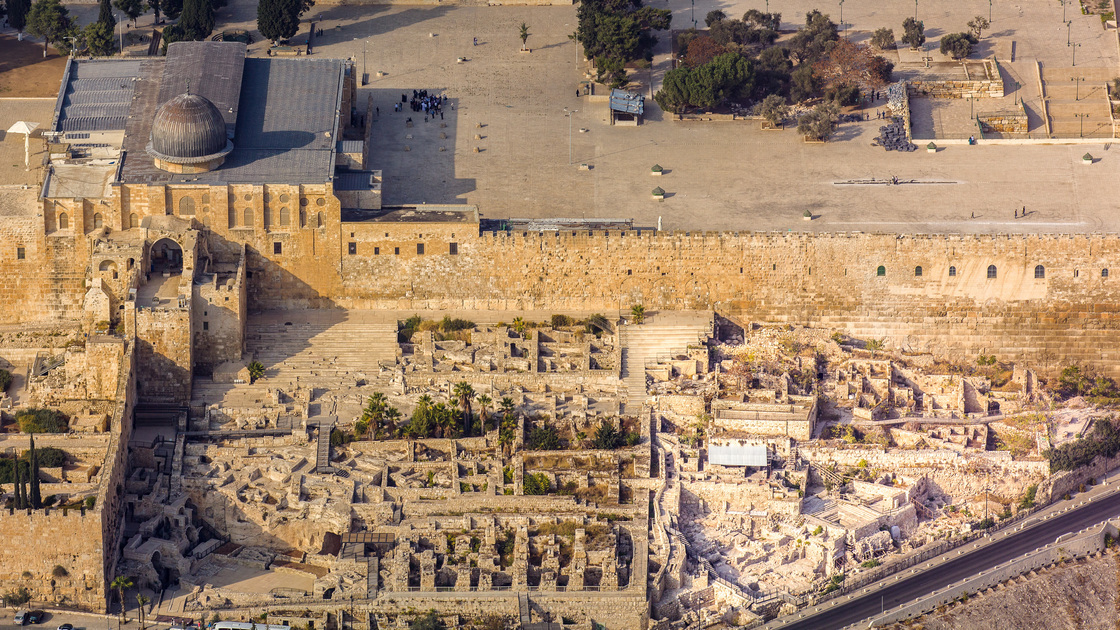EDMOND—Imperial Academy students taking History of Judah listened to five guest speakers in mid-May during the final unit of the academic year: “Our Work in Israel.” The students heard from instructor Harley Breth and five guest speakers who have represented Herbert W. Armstrong College in assisting with archaeologist Eilat Mazar’s excavations in Jerusalem. (The academy and college are both sponsored by the Philadelphia Church of God.)
The lectures, which began May 8 and ended May 14, started with pcg Jerusalem office manager Brent Nagtegaal lecturing by videoconference about the Church’s first involvement in Dr. Mazar’s excavations. In the first phase of her City of David excavations in 2005, Dr. Mazar had discovered a large structure that she identified as the palace of King David. Nagtegaal and a couple other Armstrong students joined her in late 2006 and early 2007 for the second phase, which uncovered more of the structure. Nagtegaal also discussed his involvement in another “miraculous” dig in summer 2007 that led Dr. Mazar to identify another structure as part of the fortification wall rebuilt by Nehemiah. He ended by telling the ninth graders that God can use any of them in such projects in the future if their hearts are in it.
“When a person who’s passionate about something tells a real-life experience to someone who has the potential to follow in their footsteps, the impact can be astonishingly deep,” Breth said. All of the speakers, including Breth, are among the 40 or so Herbert W. Armstrong College students and graduates who have worked on excavations with Dr. Mazar.
On May 9, pcg staff member Edwin Trebels delivered another videoconference talk from his home in England about the third phase of the City of David excavation, which resulted in the discovery of the Gedaliah bulla and a tunnel that was possibly used by Joab to conquer the city on behalf of David. He recounted how the discovery ultimately led to the Seals of Jeremiah’s Captors Discovered archaeological exhibit at Armstrong Auditorium on the campus of the college and academy in Edmond, Oklahoma. Breth then spoke about Dr. Mazar’s first phase of excavations on the Ophel in late 2009 and early 2010, which resulted in the discovery of the King Hezekiah bulla and the Isaiah bulla.
On May 10, pcg staff member Bailey Crawford spoke about the second phase of excavations on the Ophel (late 2012). He said he came to love Dr. Mazar’s archaeological team like a family and was miraculously protected from serious injury on the dig site. In the same class, staff member Christopher Eames gave a videoconference lecture about the continuation of the second phase on the Ophel in mid-2013. He said that as more supervisory roles were given to Herbert W. Armstrong College students and graduates, more important discoveries were made relating to the biblical era of the kingdom of Judah.
On May 13, college student George Haddad discussed the continuation of the Ophel (phase 2) excavations in early 2018, reviewing the significance of a cave on the site and the discovery there of coins from the Jews’ a.d. 70 revolt against the Roman Empire.
Over the course of the academic year, History of Judah covers Herbert W. Armstrong’s book The United States and Britain in Prophecy, the biblical patriarchs, the kingdom of King David, the prophets, the captivity and return of the Jewish people, the period between the Old and New Testaments, and from the Hellenistic period to the Roman period to modern Jewish history, and related subjects.
